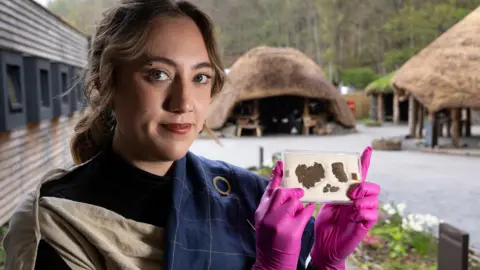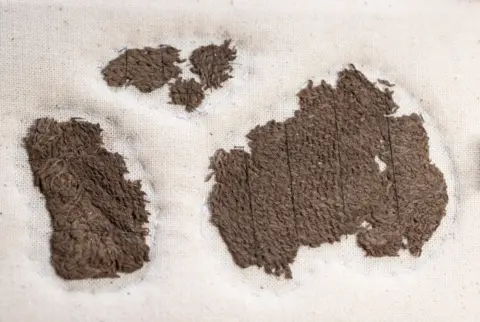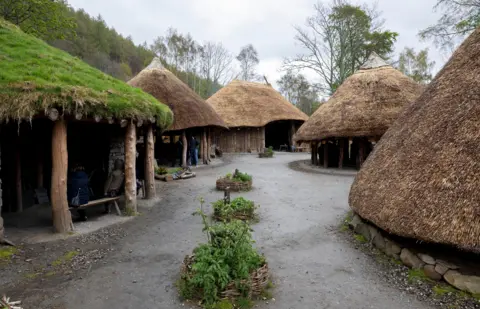Rare Iron Age textile to go on display for first time
 Martin Shields
Martin ShieldsAn ancient textile which gives a unique insight into Iron Age Scotland is to go on display for the first time.
The piece of fine woven yarn is almost 2,500 years old and dates back to the early to middle part of the Iron Age.
It was previously thought to be too fragile to display, but following conservation work it has gone on permanent display at the Scottish Crannog Centre in Kenmore, Perthshire.
The textile, believed to be the oldest of its kind, was originally discovered in 1979 when an Iron Age dwelling house, known as The Oakbank Crannog, was excavated on Loch Tay.
 Martin Shields
Martin ShieldsThe material had been pushed into silt on the loch bed which led to its survival, having been preserved naturally over thousands of years.
It has been analysed by archaeologists at the University of Glasgow and radiocarbon dated to between 480 - 390BC.
It has also undergone a painstaking stabilisation and conservation process which has enabled it to be displayed safely in a climate-controlled cabinet.
Maureen Kerr, an experimental archaeologist and volunteer at the centre, said: "The exciting thing is that there's nowhere else in Scotland that has textile of this size and of this age.
"The fine weave is highly unusual for the time and area and, along with the fact there are remnants of a possible hem, it makes it a very rare and special discovery.
"We believe this is the oldest of its type in Scotland."
 Martin Shields
Martin ShieldsIt is considered a unique example of a 2/1 twill weave, shedding light on some of the technologies society had in the Iron Age.
Dr Susanna Harris, senior lecturer in archaeology at the University of Glasgow, analysed the textile on behalf of the centre.
She said: "Wool was such an important material in Scotland, so it's been exciting to examine this piece.
"It's really important finds like this go on display.
"It may be a small piece of textile but it tells us a lot about the heritage of Scottish textiles."
Crannogs were dwelling houses built on stilts over water and usually had a bridge connecting them to the shore.
The first crannogs in Scotland were built on lochs from Neolithic times.
The Scottish Crannog Centre's reconstructed crannog was destroyed by fire in 2021.
It opened on its new and enlarged site near Kenmore last year and the build team is completing a new crannog using sustainable and historical construction methods.
